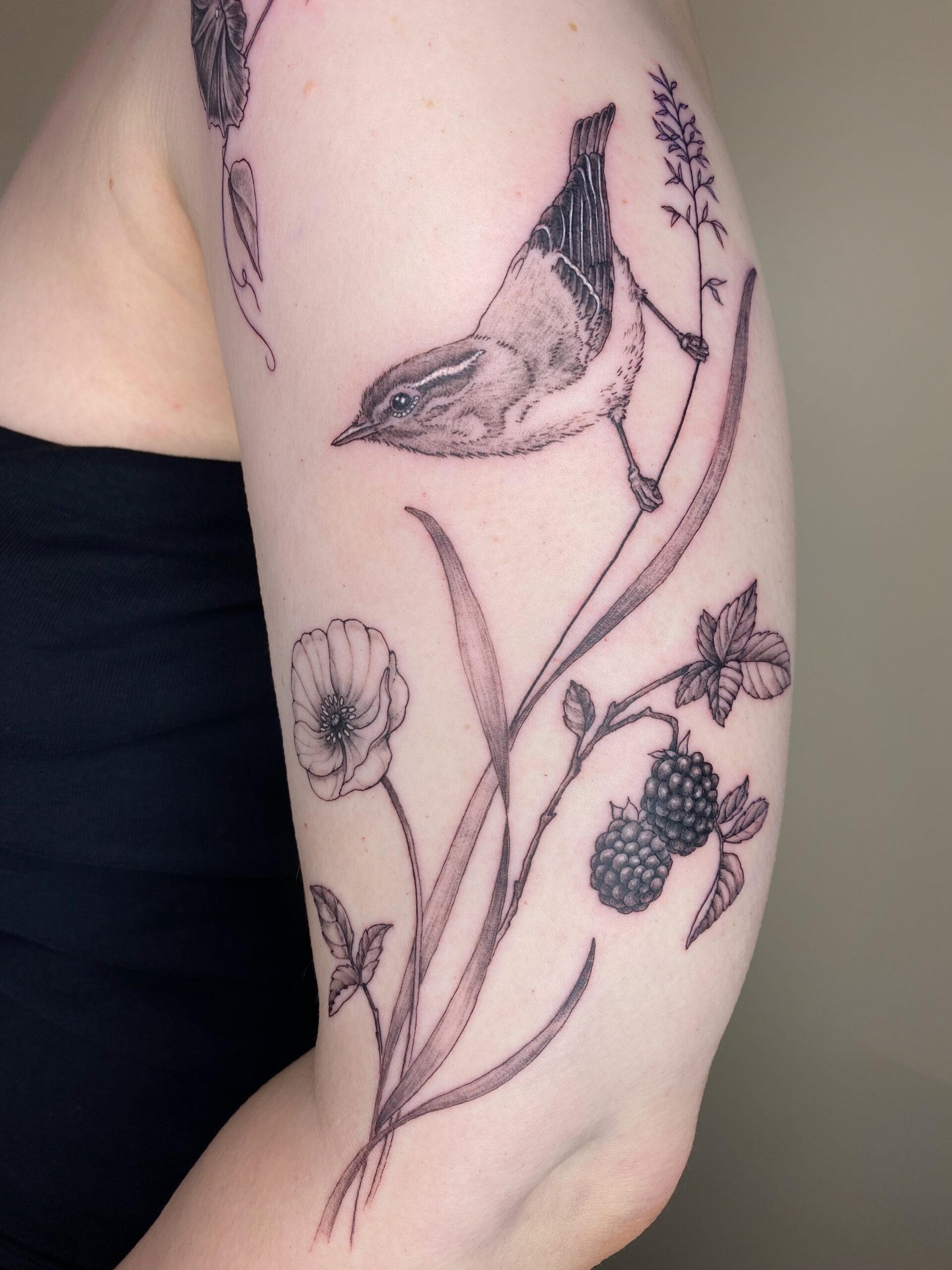
Tattoos are everywhere these days and more popular than ever! Whether it’s a small, meaningful design or a massive work of art, the possibilities are endless. But how are tattoos actually made? Something with needles and ink? That’s right! However, there’s a bit more to it. Curious about how the tattoo process works, what happens in your skin, and what you should consider? Keep reading this blog!
Think of a tattoo as a permanent drawing or design, created by depositing ink under the skin with a needle. Sounds simple, right? It’s not! It requires a lot of precision and expertise. Tattoo artists need to place the ink in a specific layer of the skin. Only then will the tattoo remain permanently visible and beautiful.
The skin consists of different layers, and not all of them are suitable for holding ink. When tattooing, the needle penetrates the skin to a depth of 1 to 1.5 mm, reaching the dermis. This depth is perfect for holding ink while avoiding excessive damage.
– The Epidermis (Outer Layer): This is the thinnest skin layer, where cells are constantly renewing and shedding. Ink placed here fades quickly.
– The Dermis (Middle Layer): This is where the tattoo ink is deposited. The dermis contains collagen and connective tissue, which help keep the ink in place.
– The Subcutis (Inner Layer): This layer is not reached during tattooing.
Tattoo ink can’t be fully broken down by the body and remains encapsulated in the dermis. When one macrophage (a type of immune cell) dies, another takes its place, ensuring the ink stays in the same spot. This is why tattoos remain permanently visible and beautiful.
So why do tattoos change over time? Ink is still a foreign substance to your body, so your immune system works to remove it! White blood cells gradually absorb ink particles, which is why tattoos may fade or blur slightly over the years.
Step 1: Design and Stencil
The process begins with choosing and printing the design. Once the size and placement are finalized, the artist creates a stencil and transfers the design onto your skin. The stencil serves as a guide for the artist.
Step 2: Tattooing
Using a tattoo machine, the ink is deposited into the skin with a needle moving at speeds of up to 150 times per second. The artist follows the design with precision.
Step 3: Hygiene and Safety
Hygiene is critical when getting a tattoo. Professional tattoo artists use sterile needles, clean equipment, and safe inks to prevent infections.
Although tattoos are permanent, they can fade over time. This happens because tiny ink particles are gradually carried away by the lymphatic system. Proper aftercare and sun protection can help maintain your tattoo’s vibrancy. Check out our January blog for more details on why tattoos fade!
Now you know the tattoo process and what happens in the skin. You’re better prepared for your first (or next) tattoo! Always choose a design that resonates with you, go to a professional artist, and follow aftercare instructions.
Do you have more questions about tattoos? Want to share your experiences? Let us know!
share